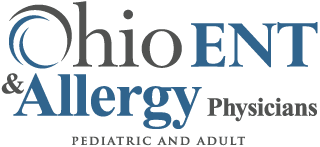Provided by: Andrew J. Tompkins, MD MBA (ENT)
Many of us have recently completed the familiar period of open enrollment, where we select health insurance plans for the upcoming calendar year. These exercises typically involve an attempt to project costs in order to reduce our out-of-pocket spend and decrease the downside risk of large, out-of-pocket payments. These projections would be easier if our healthcare landscape didn’t have such cost opacity, making such attempts frustrating and near futile. Healthcare costs and cost shifting have forced us to take these exercises much more seriously.
According to the Kaiser Family Foundation1, the average annual family premium for employer-based coverage has grown 4.5% annually over the last 10 years, now standing at $21,342. These premiums, and worker contributions to them, have easily surpassed wage growth and inflation over that time period. In order to reign in employer premium growth, costs are increasingly being shifted to employees not just through premiums but deductibles as well since high deductible plans are cheaper. Employer plans now involve some level of deductible for 83% of workers, up 30% from 2006. The average deductible has also risen 6% annually for the last 10 years and currently stands at $1,644 for single coverage. Further, we have seen a marked shift toward high deductible health plan (HDHP) enrollment, rising from 4% in 2007 to 31% in 2020. The trends are undeniable – healthcare is getting more expensive, and as more of that cost burden is being shifted to employees discretionary income is getting squeezed.
These trends naturally motivate all of us to seek value in healthcare – we want the best quality for the best price. Providers should also be seeking to provide value for our patients because focusing on value optimizes the total patient care experience, particularly when so many of us incur costs based on the decisions that are derived from our visits. Pursuing a value priority compels us to provide the best quality of care – outcomes, timeliness of care, compassion, and communication, just to name a few components of quality care. This has been the standard for years. But, the market now demands that we should also seek to be good stewards of our patients’ discretionary income. I have been proud to be part of Ohio ENT & Allergy Physicians (OENTA), where we epitomize quality care delivery and also seek to be cost-effective for our patients.
OENTA’s quality starts with the people. Our physicians are trained at the best institutions and collaborate to achieve the best outcomes for our patients. We review current literature and technology advances so we can optimize care delivery for our patients. This ethos is bolstered further by our robust system of internal review. Our staff work tirelessly to support these efforts both directly with our patients and behind the scenes to improve the patient experience. Our physicians are accessible at all hours and have same day availability. We have a high quality and low radiation emitting CT scanner available, reducing long-term side effects. Our partnership with the Ohio Surgery Center (OSC) has several quality advantages as well. Ambulatory surgery centers have been shown to be safer centers of care, even when adjusting for the underlying health of the patients being treated.2 The OSC has experienced pediatric and adult anesthesiologists and staff that have been working exclusively with ENT surgery for years. They have been serving central Ohio for decades, with leadership requiring the highest quality standards in the industry. We also adapt to new challenges that have arisen from our current pandemic. OENTA has been lauded for our COVID protocols, which have allowed us to keep our patients and staff safe while still providing high quality care.
While these quality metrics alone would have been impressive in the past we recognize that more must be done to reduce our patient’s out of pocket costs. Our patients demand it. We demand that of our own care. And, it fulfills our mission to optimize our service towards our patients.
At OENTA we will never charge our patients a hospital facility fee in addition to your office visit. Health Affairs, a leading health policy journal, points out that these facility fees can make your outpatient visits at least twice as expensive for the same service.3 Our electronic medical record is suited to guide generic and cost effective prescribing patterns with no reduction in quality. Should imaging be necessary, we don’t add-on hospital fees for the scan, keeping your costs low. And, should surgery be a mutually agreed treatment, our partnership with the Ohio Surgery Center has several advantages.
The OSC will work with our patients to provide full cost transparency in advance of any procedure. Studies have revealed that, in general, ASC (Ambulatory Surgery Center) prices are significantly lower than hospital outpatient department (HOPD) prices for the same procedure in all markets, regardless of payer.4 Those savings are passed on to you by lower out of pocket expenses.
The healthcare market now demands that we focus on quality and patient costs when we serve our patients. OENTA has risen to this challenge and is always seeking other opportunities to optimize the patient care experience on both of these important fronts. As fellow Ohioans, colleagues, neighbors and friends we will continue working to serve you as we would want to be served. We at OENTA want to thank you for entrusting us with your care and wish you a safe 2021.
References:
1. (2020, Oct 8). 2020 Employer Health Benefits Survey. Kaiser Family Foundation. Retrieved from: https://www.kff.org/health-costs/report/2020-employer-health-benefits-survey/
2. Munnich EL, Parente ST. Returns to Specialization: Evidence from the Outpatient Surgery Market. Journal of Health Economics. 2018; 57: 147-167.
3. Cassidy A. (2014, July 24) Health Affairs. Retrieved from: https://www.healthaffairs.org/do/10.1377/hpb20140724.283836/full/
4. Healthcare Bluebook and HealthSmart via Advancing Surgical Care (2016) Study: Commercial Insurance Cost Savings in Ambulatory Surgery Centers. Retrieved April 5, 2021, from https://www.ascassociation.org/advancingsurgicalcare/reducinghealthcarecosts/costsavings/healthcarebluebookstudy.
